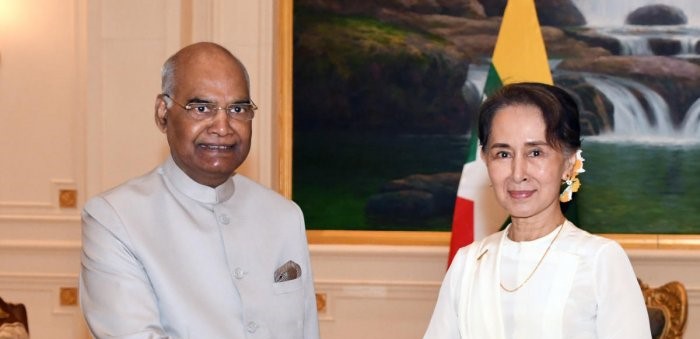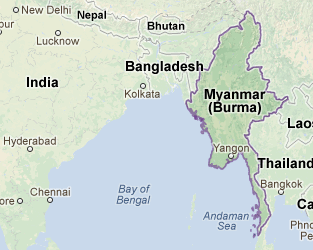India strengthen ties with Myanmar
December 19, 2018 | Expert Insights

Indian President Ram Nath Kovind concluded a five-day state visit to Myanmar, during which India sought to synergise its Act East and Neighbourhood First initiative with Myanmar, amid growing concerns of Chinese influence in the country.
Background
India established diplomatic relations after Myanmar's independence from Great Britain in 1948. For many years, Indo-Burmese relations were strong due to Myanmar previously having been a province of India, cultural links, flourishing commerce, common interests in regional affairs and the presence of a significant Indian community in Myanmar. However, the overthrow of the democratic government by the Military of Myanmar led to strains in ties. Only China maintained close links with Myanmar while India supported the pro-democracy movement.
Under the leadership of Prime Minister Narendra Modi, the Government of India has made its relations with East Asian neighbours a foreign policy priority at a time when the United States has engaged in a "pivot to Asia". India's Act East policy is an effort to cultivate extensive economic and strategic relations with the nations of Southeast Asia in order to bolster its standing as a regional power and a counterweight to the strategic influence of the People's Republic of China.

Analysis
India continues to deepen its strategic engagement with Myanmar, a key interlocutor in its Act East policy. During his five day visit, the Indian President appreciated Myanmar's efforts towards achieving peace and national reconciliation. President Ram Nath Kovind made the pledge to step up bilateral engagements under the Act East and Neighbourhood First initiative.
"India reiterated its commitment to support Myanmar in its efforts to build infrastructure and develop its human resources. Myanmar expressed its appreciation for India's assistance in its endeavour for socio-economic development," according to a joint statement issued at the end of President Kovind's official engagements in the country.
The presidential visit to Naypyidaw, came a little over a month after China and Myanmar finalised a deal to build a seaport in Kyaukpyu on Myanmar's western coast. The seaport gives China an alternative route for energy imports from West Asia and avoids potential choke points in the Malacca Strait.
India has offered to fund and work on development projects and boosting connectivity with Myanmar. President Kovind handed over the first 50 units of prefabricated houses for Rohingya refugees, built in Rakhine State with money from the Indian government. India may also expand the Rakhine State Development Programme once the current allocation of US$25 million (S$34 million) is fully committed. The two countries discussed how India would help with the return of Rohingya refugees, after a brutal military crackdown last year forced some 720,000 over the border from Rakhine State into Bangladesh.
The two countries signed two memorandums of understanding (MoU) on state-level cooperation in science and technology from 2018 to 2021 and on providing capacity building training to Myanmar's judges and judiciary officers, respectively.
India has launched a range of connectivity projects, including a trilateral India-Myanmar-Thailand highway, tested bus services and opened border markets. It is also working with Myanmar to develop the Kaladan Multi-Modal Transit Transport Project that connects Kolkata to the port in Sittwe, in Rakhine State, which is then connected to India's north-east via road and river networks.
President Kovind appreciated Myanmar's decision to grant tourist visa on arrival to Indian citizens who intend to visit the country. The initiative, implemented from December 1, will promote people to people ties and increase the flow of tourists, the statement said.
China and Myanmar signed a memorandum of understanding in September to establish the China-Myanmar Economic Corridor. China has already constructed dual-carriage motorways connecting Kunming in Yunnan province with towns on the Myanmar border. The seaport is the latest addition to Chinese ‘string of pearls’ across the Indian Ocean that comprises ports such as Gwadar in Pakistan and Hambantota in Sri Lanka. Both China and India covet Myanmar's growing domestic market, natural resources as well as access to key ports.
Assessment
Our assessment is that Myanmar is strategically vital to India because it provides a link to connect with South East Asia and beyond. It is also a key security partner in India's campaign against different insurgency groups, some of whom have a presence in Myanmar. We feel that the Chinese influence is robust because of their ability to contribute significantly to the local economy by investing in large infrastructure projects in Myanmar. We believe that India and China are likely to gain more through cooperation.








Comments